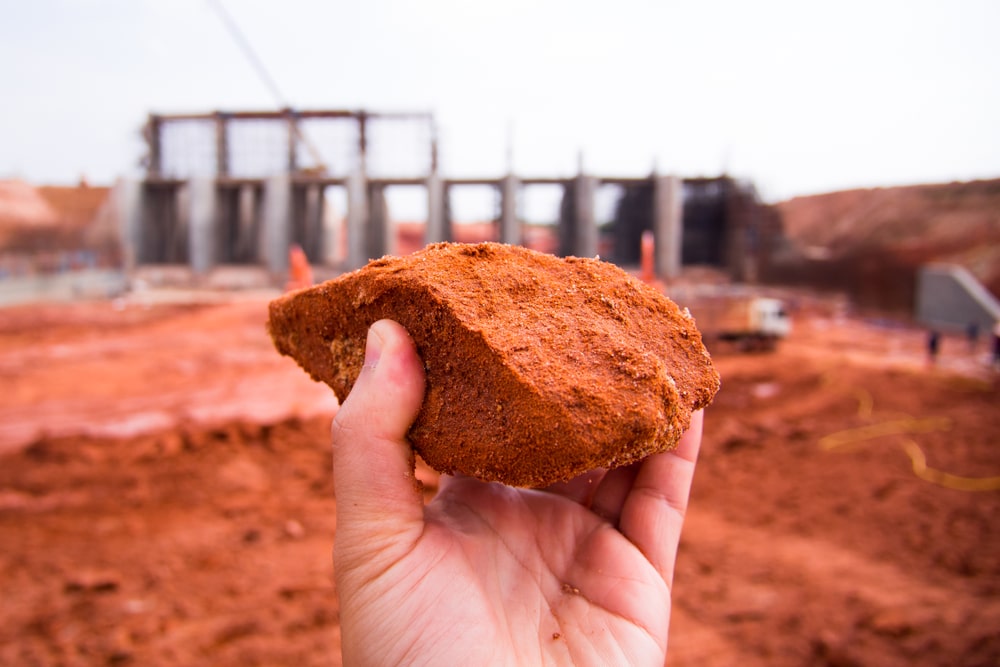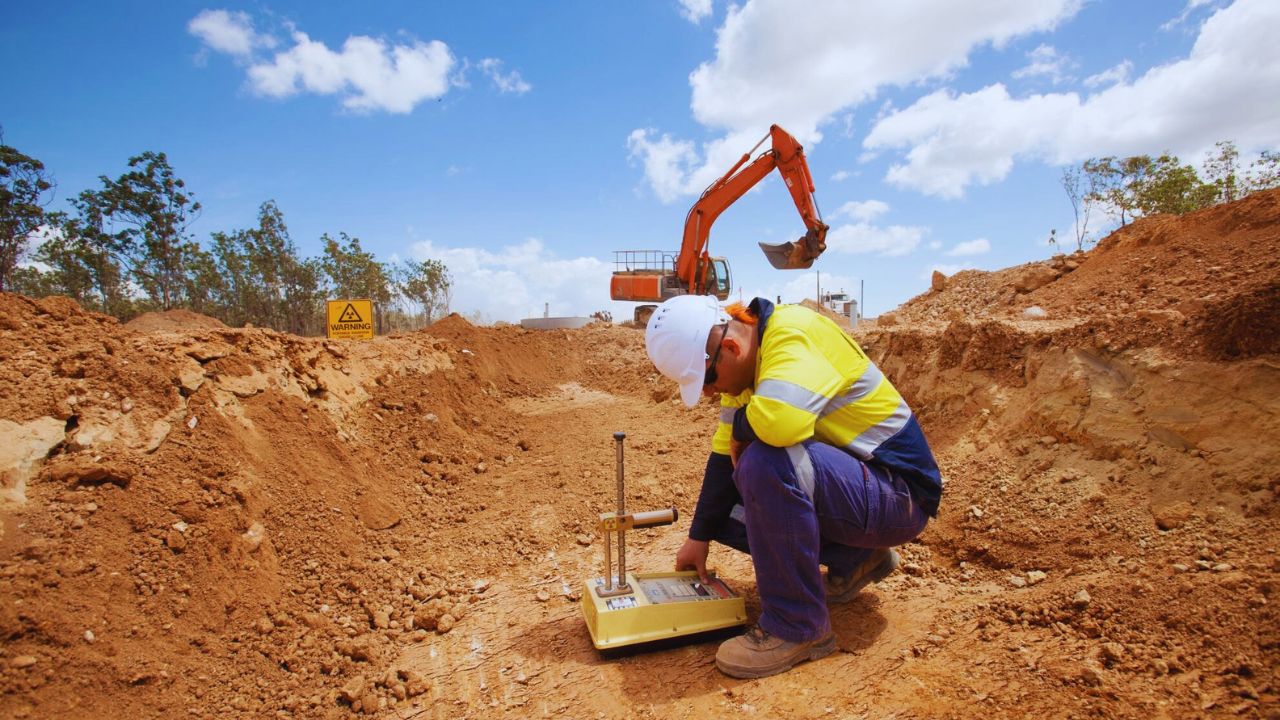Checking out the Function of a Geotechnical Engineer Description and Responsibilities
Wiki Article
An Extensive Introduction of Geotechnical Engineering Techniques and Their Influence on Modern Civil Engineering Projects
Geotechnical engineering serves as the foundation of contemporary civil engineering, giving crucial methods that attend to the complexities of subsurface conditions. The interaction of soil analysis, structure style, and cutting-edge technologies shapes the integrity and sustainability of framework jobs.Value of Geotechnical Engineering
Geotechnical design functions as a critical structure for civil engineering tasks, affecting the safety and security and security of structures. This discipline focuses on the behavior of dirt and rock products, supplying necessary understandings that assist the design and construction procedures. By understanding the communication between the earth and crafted structures, geotechnical designers can assess dangers connected with ground problems, such as settlement, slope stability, and liquefaction.The value of geotechnical engineering extends beyond simple architectural honesty; it plays an essential role in environmental protection and sustainability. Correctly implemented geotechnical analyses make certain that projects minimize their ecological footprint and follow regulative demands (geotechnical engineer description). Geotechnical design is instrumental in site choice, allowing engineers to determine ideal locations for building that mitigate prospective threats.
In enhancement, geotechnical engineering cultivates advancement in civil engineering by progressing strategies for ground renovation, foundation style, and excavation. The technique's contributions are vital in resolving obstacles postured by differing dirt conditions, therefore helping with efficient and secure infrastructure development. Generally, the value of geotechnical design is vital in ensuring that civil engineering projects are not just feasible but additionally resilient versus natural and man-made difficulties.
Trick Methods in Geotechnical Design

An additional crucial strategy is dirt stabilization, which involves modifying soil residential properties to boost load-bearing ability or minimize settlement. Methods such as adding concrete, lime, or making use of geosynthetics are commonly utilized to accomplish dirt renovation.
Ground renovation methods, consisting of dynamic compaction and vibro-replacement, are also important. These techniques aim to densify soft or loose soils, improving their strength and decreasing liquefaction potential in seismic locations.
Keeping structures, such as sheet stacks and dirt nailing, are utilized to sustain excavations and protect against dirt activity. Moreover, slope stablizing methods, consisting of drain systems and retaining walls, are vital for mitigating landslide threats.

Soil Analysis and Checking Approaches
Efficient dirt evaluation and testing techniques are vital for recognizing the physical and chemical homes of dirt, which straight affect design choices. An extensive assessment of dirt features is essential for forecasting habits under different loading problems and ecological influences.Usual dirt testing methods consist of both field and laboratory strategies. Field examinations, such as the Requirement Penetration Test (SPT) and Cone Infiltration Examination (CPT), give instant insights right into soil density, toughness, and stratification. These examinations help engineers analyze site conditions effectively before more comprehensive laboratory evaluations.
Lab screening methods, such as Atterberg limitations, grain dimension circulation, and compaction tests, are critical for determining dirt plasticity, wetness material, and ideal compaction degrees. Progressed strategies like triaxial tests and consolidated undrained (CU) examinations provide useful information on shear toughness and effective tension specifications.
Chemical screening, consisting of pH, electric conductivity, and organic material evaluation, is additionally important for comprehending possible soil contamination and its influence on construction materials. Jointly, these dirt analysis and screening techniques create the foundation of notified decision-making in geotechnical design, guaranteeing the security and security of modern-day civil engineering tasks.
Foundation Design Approaches
These methods can be categorized right into deep and shallow foundations, each fit to particular dirt problems and loading circumstances. Shallow structures, such as spread footings and floor covering foundations, are usually utilized when surface area soils have ample bearing capability.On the other hand, deep structures, including heaps and drilled shafts, are used when surface dirts are poor or weak for supporting the framework. These foundations transfer tons to deeper, geotechnical specialist a lot more stable dirt or rock layers, making them necessary for skyscrapers and bridges in challenging geotechnical problems.
Selecting the suitable structure design entails extensive geotechnical examinations, including dirt make-up, bearing ability, and groundwater conditions. In addition, engineers need to consider aspects such as settlement, lateral lots, and potential seismic task to guarantee the foundation's performance with time.
Ultimately, a well-executed foundation layout is a pivotal element of civil design, directly affecting the safety and security, durability, and functionality of structures. geotechnical companies in south africa. By lining up structure kinds with site-specific problems, designers can successfully mitigate dangers connected with structure failing
Technologies Forming Civil Design

Lasting products, such as high-performance concrete and recycled aggregates, are likewise gaining grip, advertising environment-friendly practices while preserving architectural integrity. In addition, advanced geotechnical strategies, such as ground improvement and deep mixing approaches, are improving the stability of foundations in difficult dirt conditions.
Furthermore, the usage of drones and remote picking up modern technology is boosting website checking and evaluating, providing real-time data that help in managing building development and security. The execution of ingenious building techniques, such as premade and modular building and construction, better accelerates job timelines and minimizes waste. Collectively, these advancements are not only transforming civil design methods however additionally making certain that modern-day facilities satisfies the demands of a growing international populace while dealing with environmental problems.
Final Thought
To conclude, geotechnical engineering techniques are indispensable to the success of contemporary civil engineering tasks. The application of website investigation, dirt stabilization, and ground improvement techniques makes sure the safety and security of facilities. Advancements such as Building Details Modeling (BIM) and advanced monitoring modern technologies even more enhance job effectiveness and precision. By utilizing these techniques, designers can reduce risks and add to the advancement of resistant metropolitan environments, eventually fostering sustainable growth and safety in civil engineering techniques.Geotechnical design serves as the backbone of contemporary civil design, providing necessary techniques that attend to the intricacies of subsurface problems.Geotechnical engineering serves as a crucial structure for civil design tasks, influencing the security and security of frameworks.In enhancement, geotechnical engineering promotes development in civil engineering by advancing methods for ground enhancement, structure layout, and excavation. On the whole, the significance of geotechnical engineering is critical in making certain that civil design projects are not just feasible but also durable against all-natural and manufactured misfortunes.
In verdict, geotechnical design strategies are indispensable to the success of modern-day civil design tasks.
Report this wiki page